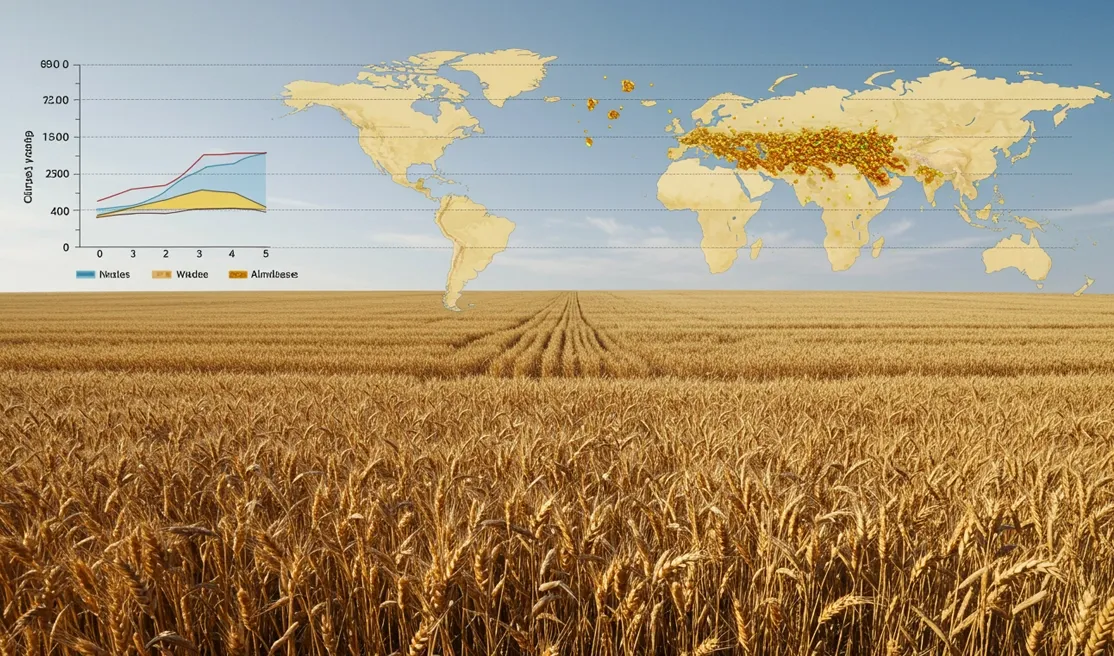
How to Increase Wheat Crop Yield - Modern Methods for Higher Output
What Does It Mean to Increase Wheat Crop Yield?
Increasing wheat yield means sustainably maximizing grain output per unit of land—a vital goal for global food security. This is no longer about guesswork; the modern solution blends agricultural wisdom with data-driven precision.
Understanding how to increase wheat crop yield now involves leveraging cutting-edge tools. Platforms like Sairone exemplify this shift, converting complex aerial data into clear, actionable insights to protect and enhance harvest potential.
Understanding Current Wheat Yield Trends and Gaps
While global benchmarks show impressive historical growth, a significant "yield gap" often remains between a farm's potential and its actual output. Closing this gap is key. To grasp the opportunity, it's helpful to look at two core areas:
Recent Global and Regional Wheat Yield Benchmarks: In some regions, like parts of Europe, yields have soared from under 1,500 kg/ha to over 8,000 kg/ha thanks to scientific advancements.
Identifying Local Yield Gaps: These gaps are often caused by localized factors, including climate variability, soil deficiencies, or suboptimal nutrient management.

Choosing the Right Wheat Varieties to Boost Yield
The foundation of a successful harvest lies in genetic selection, which requires a nuanced, location-specific strategy. Key considerations must include:
High-Yielding Cultivars for Different Climates: Selecting improved varieties bred for your specific region is the first step toward maximizing output.
The Role of Drought Resistance: With shifting climate patterns, prioritizing varieties with proven tolerance to dry conditions is more critical than ever.
Region-Specific Seed Selection Strategies: Factors beyond yield, like strong disease resistance and germination rates, are vital for crop resilience.
Precision Planting Techniques to Increase Wheat Crop Yield
Properly chosen seeds must be planted effectively to realize their potential. This is where precision techniques make a measurable difference. Here are the core methods farmers are adopting:
Precision Seeding for Optimal Density and Depth: Approaches like the System of Wheat Intensification (SWI) use wider spacing to encourage stronger root systems and more tillers.
Advances in Precision Agriculture: This practice uses technology to manage different zones within a field according to their specific needs for unparalleled efficiency.
Leveraging Technology to Monitor and Improve Wheat Yield
Effective monitoring is what turns good planting into a great harvest. Modern agriculture achieves this by layering technologies that provide a complete view of crop performance, from a wide-angle perspective down to the individual plant.
Satellite and Remote Sensing Technologies
Satellites provide the wide view, monitoring large-scale health patterns across entire fields to spot widespread stress early.
UAVs and Drones in Precision Agriculture
Drones zoom in for the details, capturing high-resolution imagery to pinpoint localized issues like water stress or pest attacks with surgical accuracy.
Artificial Intelligence and Machine Learning Applications
AI and ML process this vast visual data, providing critical insights for tasks like Weed detection and overall Plant health monitoring.
Internet of Things (IoT) and Sensor Technologies
In-field IoT sensors deliver real-time ground truth, continuously tracking soil moisture and nutrient data for hyper-efficient resource management.
Data-Driven Decision-Making Platforms
These platforms unite all data streams into one dashboard, transforming complex information into simple, actionable intelligence for proactive farm management.

Sairone’s Advanced Wheat Yield Estimation Powered by Cutting-Edge Technology
This is where theory meets application. Saiwa's Sairone platform directly leverages the technologies mentioned above by automating the analysis of high-resolution drone imagery. Its powerful AI/ML engine is designed to deliver clear, actionable metrics that were previously difficult to obtain.
Soon, with its Crop yield estimation service, Sairone will empower farmers to turn aerial images into precise forecasts. By identifying issues early and optimizing inputs, Sairone helps save time, reduce labor, and equip growers with the data they need to confidently manage their operations for maximum output.
Conclusion
Ultimately, mastering how to increase wheat crop yield in the modern era is a multi-faceted endeavor. It hinges on the synergy between superior genetic varieties, precise planting techniques, and intelligent data analysis. The true breakthrough, however, lies in integrating these elements. Advanced AI tools like Sairone serve as the crucial link, translating complex data into clear, field-level decisions. This integration doesn’t just raise yield potential; it ushers in a new era of intelligent, sustainable, and highly productive agriculture.
